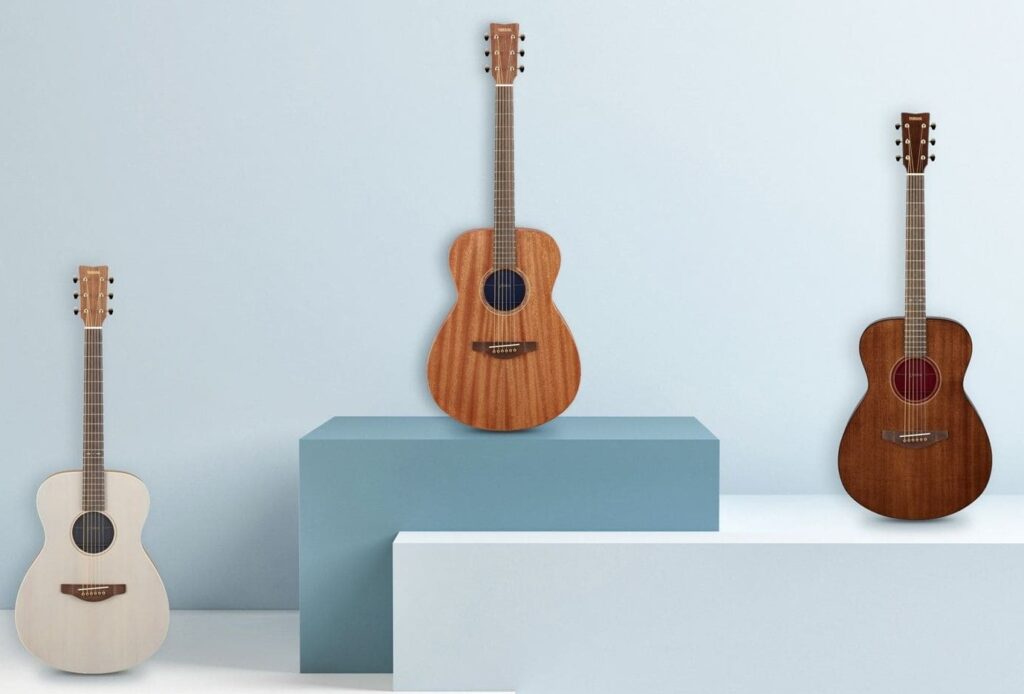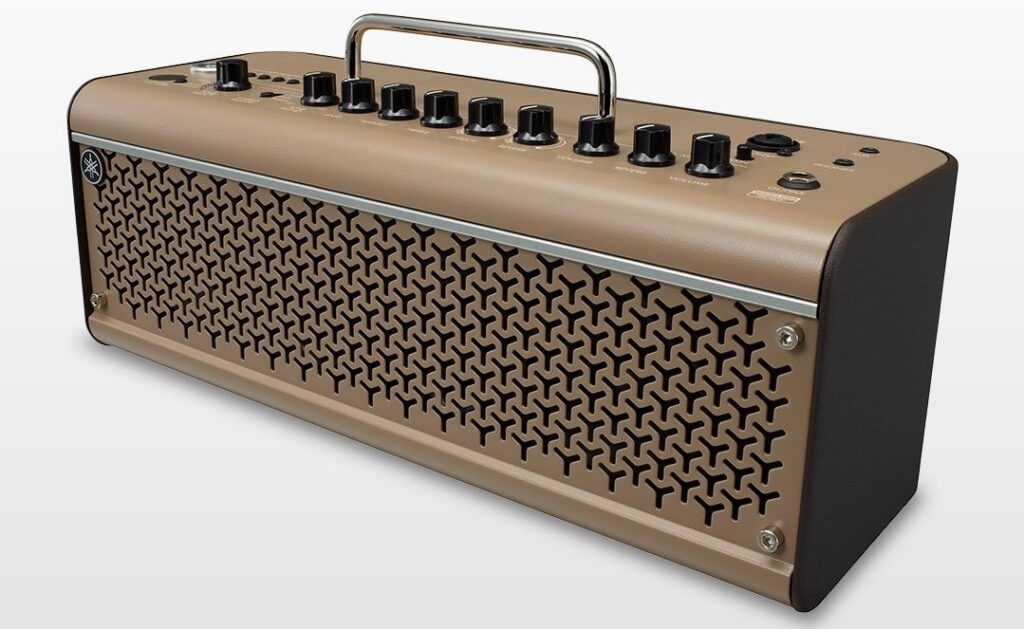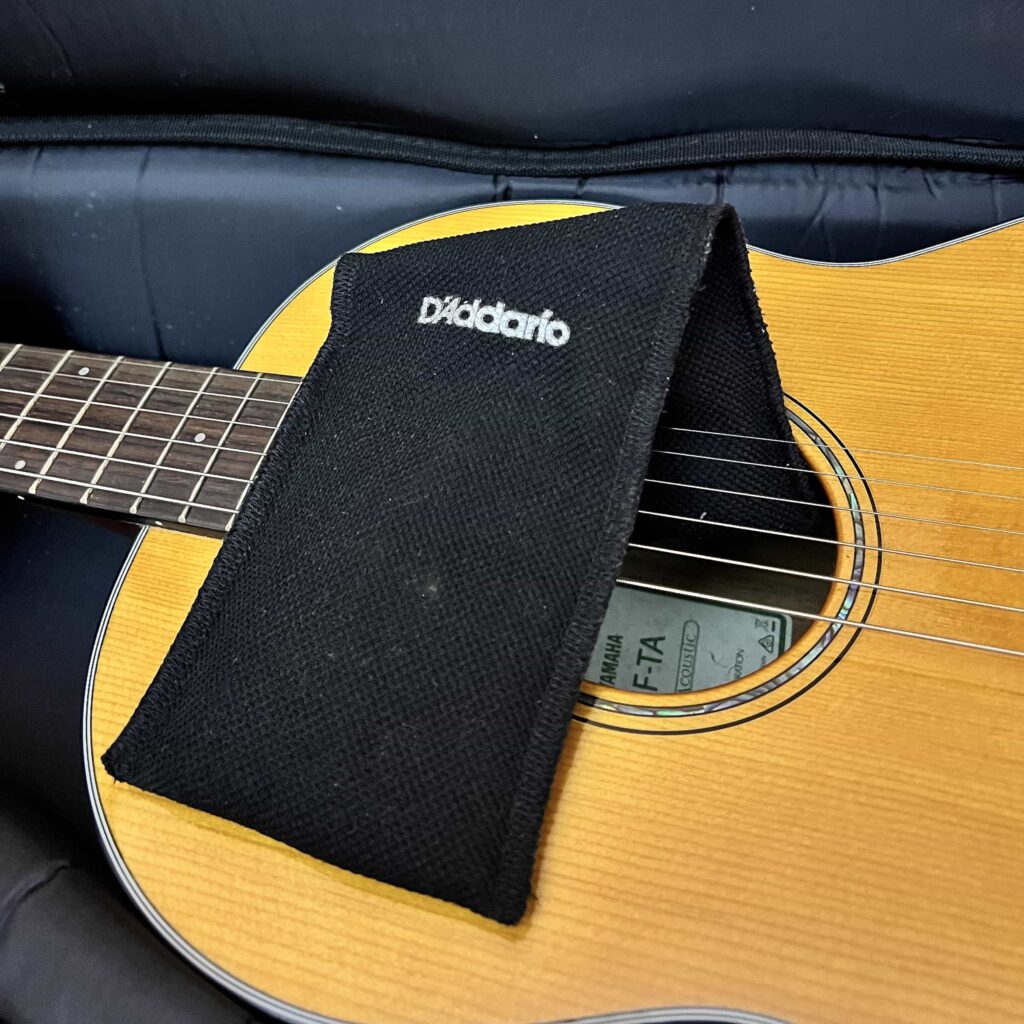Top 10 Gift Ideas for Guitarists
Guitars, gadgets and gizmos.
Musicians are constantly looking for inspiration, new sounds, and devices that expand their sonic palette, technique or personal performance. Guitar players, in particular, have lots of options when it comes to the types of instruments available, plus we arguably live in the greatest era for amplifiers and effects processors.
So when it comes to holiday gift ideas for guitarists, it should be pretty easy to find something to widen the eyes and broaden the smile of your favorite axe slinger. Here are my top 10 suggestions.
1. A NEW GUITAR
Entry level
When it comes to acoustic guitars, a great choice for beginners is the Yamaha STORIA line, which was created with first-timers in mind. These cost-effective yet aesthetically pleasing concert-body guitars offer ease of playability, a thinner body width and a nice low action for the fingers, and also come in three stylish finishes. There are three models, each equipped with a passive undersaddle piezo pickup so they can be connected to an amplifier, as well as played acoustically. STORIA I has an off-white solid spruce top and a mahogany back and sides; STORIA II has a natural solid mahogany top, back and sides; and STORIA III has a chocolate brown solid mahogany top, back and sides. Here’s a video that shows them in action.

When it comes to entry-level electric guitars, my gift suggestion would be the Yamaha Revstar RSE20, which features a double-cutaway mahogany body and a mahogany neck with a rosewood fingerboard, and comes outfitted with two humbucking pickups for extra versatility. (There’s even a left-handed model for southpaws.)

Its tone control can also be pulled out to engage a “dry switch” feature that essentially reduces some of the bass response of the pickups — useful when you are looking for extra brightness. Newbies may also find the RSE20 easier to play than many other electric guitars, due to its shorter 24 3/4” scale length and a satin-finished neck that allows for smooth position changes along the entire fretboard. Here’s a video of me putting the RSE20 through its paces.
Intermediate
The parlor-sized Yamaha CSF-TA TransAcoustic guitar is one of my favorite acoustic guitars for travel, recording and songwriting sessions. Its solid spruce top is paired with a solid mahogany back and sides for a warm, full tone, and its short scale length helps with ease of string tension. One of the most amazing things about this instrument (and all Yamaha TransAcoustic guitars) is that hall and room reverb, plus a lush chorus can be blended with the natural acoustic tone without needing an effects pedal or amp, although all of the effects and acoustic tones can also be amplified through a P.A. system using the built-in piezo pickup. Here’s a video of me doing a live performance in Australia on my CSF-TA.

In terms of an intermediate-level electric guitar, you can’t go wrong with the Yamaha Pacifica Standard Plus. Its unique coil-tappable single-coil pickups were co-designed with Rupert Neve Designs for a crisp, tuneful tone that sits perfectly in any musical genre or composition. In addition, the locking tuners keep everything nicely in tune, even when using the floating tremolo bridge for chordal shimmers and dive bombs alike. The slim c-shaped neck and carved heel joint make for exceptional playability, and the delicious tones and color palettes that can be coaxed from this beautiful instrument are sure to stimulate the senses of any discerning musician. Here’s a video of me playing one of these superb guitars.

Professional
The newly released Yamaha TAG3 C is a groundbreaking acoustic guitar that features an onboard looper, delays, choruses, reverbs and a chromatic tuner — all without needing an effects pedal or amplifier. This all-solid tonewood acoustic sounds amazing (even without the effects engaged), plays like a dream, and offers portable, performance-ready tones just about anywhere you want to play music. In addition, a dedicated app allows for detailed editing of effects and the storage of up to ten user-created loops. The TAG3 C should be very high on your list of options, for any guitarist at any level of proficiency, whether playing for fun or doing professional recording or live performance. You can read my first take on this amazing instrument here, and be sure to check out this video of me demonstrating the TAG3 C’s onboard looper.

Finally, if you’re looking to gift a professional-level electric guitar, the SA2200 is, in my opinion, the finest one that Yamaha makes, although it’s currently somewhat hard to find. Handcrafted in Japan, this semi-hollow body double-cutaway instrument features a sycamore top, back and sides, along with jumbo frets and dual Alnico V humbucking pickups. What’s more, the SA2200’s short scale length, slim neck and ebony fingerboard make chordal passages easy to navigate, even for smaller hands. As you might expect from a semi-hollow body guitar, jazz passages sound smooth and perfectly intonated, but rock, blues and pop solos also soar thanks to the coil-tappable humbucking pickups. As a bonus, the stunning sunburst finish also looks amazing onstage and under the camera lights. Here’s a video of me demonstrating the extraordinary sonic capabilities of this extraordinary instrument.

2. STRINGS
A guitarist can never have too many strings. It’s not just about changing strings every so often: Guitarists should always carry a couple of spare sets or single strings in their case or gig bag, just in case one breaks in the middle of a live performance or recording session. (The top three strings are the most likely to break, so have a few of each available should that happen.) While the specific choice is very much subjective, I suggest you consider gifting a variety of Savarez strings, available for both acoustic and electric guitars.

Wiping down your strings after each practice session, jam or gig will also prolong their life, so an additional gift suggestion is a string cleaner/lubricant like the D’Addario XLR8.

3. A CAPO
Although extremely inexpensive, a capo is pretty much a must-have for any guitarist. It allows guitar players to quickly change the pitch of chords, scales and arpeggios without retuning. Here’s a video of me demonstrating how one of these handy add-ons can be used to create a complex arrangement.

4. A SLIDE
Slide guitar playing is a very distinctive technique used for blues, country and rock styles, and it can be done on both acoustic and electric guitars. The smooth sound of a glass or steel slide against the strings allows for long legato lines, double-stops and even chords to resonate in a very unique way. Here’s a video in which I show how clean and precise passages can be played with a slide.

5. A CLIP-ON TUNER
The importance of having your guitar in pitch and in tune cannot be overstated. There are pedal-based guitar tuners that run on batteries or pedalboard power supplies; however, these require you to plug a cable into your guitar. The easier way is to use a headstock (clip-on) tuner such as the Yamaha GCT1. These small, inexpensive devices need no AC power and allow you to tune both acoustic and electric guitars without plugging in; you simply clamp the tuner onto the instrument’s headstock. It then picks up the vibrations of each string and indicates the pitch on a brightly colored screen.

6. A DESKTOP AMPLIFIER
The desktop amplifier is a concept originated by Yamaha some years ago and exemplified in the company’s current THR-II Series. This kind of amp has nothing to do with the virtual desktop on your computer; it’s not a piece of software, and in fact there’s nothing virtual about it. These are actual amplifiers that are small enough to fit on an actual desktop.

My personal choice for gift-giving is the THR30IIA WL model, which offers 30 watts of power — plenty for home practice, band rehearsal and even small club gigs — and boasts features like acoustic mic modeling, Hi-Fi audio playback and stereo imaging; there’s even an input for a vocal microphone. You can edit and save your favorite tones via a free mobile app, then recall those saved presets via five buttons on the amp’s top panel. It comes with a rechargeable battery for up to five hours of performance time, and it also has a built-in chromatic tuner and a tap tempo feature for the onboard effects. As a bonus, you can even play your favorite playlist through the THR30IIA in stereo via either wireless Bluetooth pairing or a wired cable from your mobile device. This makes playing along to tracks super-easy, facilitating learning. Best of all, the THR30IIA sounds absolutely amazing whether you use it with acoustic or electric guitars.

7. A MULTI-EFFECTS PROCESSOR/MODELER
As their name implies, multi-effects processors are capable of generating many different effects such as reverb, delay, chorusing, flanging, phasing, etc. Those that offer modeling capabilities are also able to emulate the sounds of various popular amplifiers and/or microphones. My nomination in this category is the flagship Helix® Floor from the company Line 6. This innovative device utilizes dual-SHARC® processing and HX® Modeling to deliver the authentic sound and feel of analog amps and effects, and its player-friendly interface sets the industry standard for ease of use. Features include a large color LCD, built-in looping, capacitive-touch footswitches, customizable scribble strips, extensive analog and digital I/O, and an onboard expression pedal. You can think of it as a programmable stereo digital guitar rig for the semi-pro or working professional guitar player. I’ve been using Helix products in my studio for electric guitar, acoustic guitar, bass and nylon-string tones for nearly a decade, and it’s still my “go-to” rig. Here’s a video showing Helix Floor being put through its paces.

8. A STOMP BOX
A stomp box like the one I’m recommending here — the Line 6 HX One — allows you to access one effect in a single pedal that can be easily incorporated into a custom pedalboard. The HX One differs from most in that it offers options for more than 250 effects taken from the company’s HX® family of multi-effects processors, such as delay, chorus, tremolo, flanger, overdrive and pitch shifting. You can also initiate patch and program changes via MIDI — a great help during live performance. Here’s a video showing the HX One in action.

9. HUMIDITY CONTROL PRODUCTS
Humidity is the enemy of every guitar — in fact, of every instrument made of wood. If the air is too dry or too moist, the neck could warp, the finish could crack … or worse. For that reason, it’s important to have the ability to regulate and control the humidity of the environment in which guitars are stored. D’Addario Humidipaks are an excellent choice for both electric and acoustic guitars: Simply place one in the sound hole of your acoustic guitar or in your guitar case to automatically absorb, maintain or restore moisture to ensure the ideal humidity level for your guitar.

Another excellent gift option in this category would be a Cordoba HumiCase guitar case. These are designed specifically for acoustic guitars of various body types.

10. NEW PICKUPS
Replacement guitar pickups are a an excellent way to upgrade an electric guitar, especially if a guitarist loves the instrument’s playability and look, but feels the tone is lacking in punch, clarity or warmth. There are multiple manufacturers offering industry-standard pickup sizes and shapes, like humbuckers, single-coils and P90s, so a direct replacement should be available, without the need to drill larger holes in the guitar.
Do some research for the type of sound these pickups impart. Listen to audio clips on manufacturer websites and watch YouTube videos before making this kind of investment. I’d also highly recommend that a qualified luthier (a craftsperson who builds and repairs guitars and other stringed instruments) install the new pickups, unless you’re sure that the gift recipient is confident with a soldering iron.
The Wrap-Up
Every one of the gifts listed here will provide the guitarist in your life with top-notch tones, inspiration, and decades of performance satisfaction. All the acoustic and electric guitars highlighted here can be paired with any multi-effects processor, modeler or stomp box to create a nearly infinite variety of lush sonic soundscapes, and then played back in stereo from a desktop amplifier.
There’s something here for everyone who loves playing the guitar! I’d definitely be happy to receive any one of these items as a gift this holiday season.















